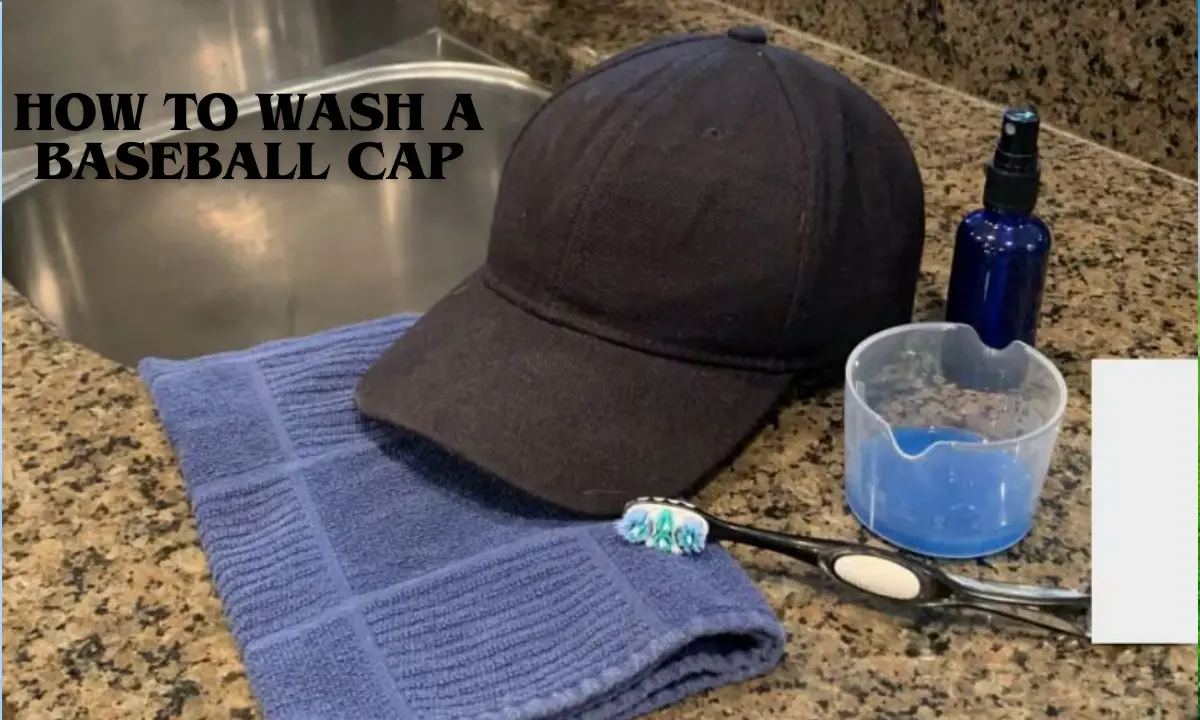How to Wash Hats: Hats, the unsung heroes of our wardrobes, shield our heads from the sun, keep us warm in chilly weather and effortlessly elevate our style. Yet, despite their indispensability, they often bear the brunt of dirt, sweat, and grime, becoming a breeding ground for odor and bacteria. Whether it’s a beloved baseball cap, a cozy beanie, or a chic fedora, knowing how to properly wash your hat is essential for maintaining its longevity and keeping it looking its best.
How to Wash Hats
Hand-knit wool hats, in particular, present a unique challenge when it comes to cleaning. Their delicate fibers require gentle care to prevent shrinking or distortion. However, fear not, for we’ve compiled the ultimate guide to help you navigate the murky waters of hat washing with ease and finesse. From deciphering material tags to mastering the art of hand washing, we will equip you with all the tools and knowledge you need to revive your hats to their former glory. So, grab your soapy water and let’s dive into the world of hat hygiene like never before.
Method #1: Washing a Hat by Hand
Prepare the Water:
Start by filling a small plastic tub with cold water. Remember, cold water is essential to prevent colors from running and minimize the risk of shrinking, especially for delicate materials like hand-knit wool. You only need enough water to fully submerge the hats.
Choose the Right Cleanser:
Once your tub is filled, add about a teaspoon of mild detergent or soap. Ensure the detergent is suitable for the material of your hat to avoid damage. For wool hats, opt for a soap specially formulated for wool fabric to prevent pilling and discoloration. Avoid using bleach or enzyme treatments on woolens.
Spot Test:
Before fully immersing your hat, perform a spot test. Soak a small patch of the hat for about two minutes and check for any bleeding colors or discoloration. If the test patch looks good, proceed to soak the entire hat.
Soak and Clean:
Once your spot test is successful, immerse the entire hat in the soapy water. Allow it to soak for approximately 30 minutes for a light cleaning or longer for stubborn dirt. Keep an eye on it to ensure the water remains cold.
Rinse Thoroughly:
After soaking, remove the hat from the water and rinse it under a steady stream of cold water to remove all traces of detergent. Continue rinsing until the water runs clear and the hat feels no longer sticky.
Remove Excess Water:
Gently squeeze the hat between your hands to remove excess water, being careful not to wring or twist it, as this could distort its shape. Then, pat the hat dry with a clean towel until it’s no longer dripping.
Air Dry:
Finally, lay the hat flat on a clean towel in a well-ventilated area to air dry. Avoid direct sunlight and heat sources, as they may cause the hat to fade or shrink. Allow the hat to dry completely before wearing or storing it.
Washing a Knit Hat with a Laundry Machine
Use a Laundry Bag:
For delicate knit hats, it’s best to use a laundry bag to protect them during the wash cycle. Place the hat in a pillowcase or washable garment bag to prevent it from getting damaged by the washer’s motion.
Prepare the Load:
If possible, wash your knit hats with a larger load of laundry to prevent them from felting. Ensure the other items in the load are of similar colors to avoid any color bleeding.
Start with Cold Water:
Begin the wash cycle with cold water to protect the delicate fibers of the knit hats. Add a cap of mild detergent or specialty wool detergent if washing wool items.
Let it Soak:
Allow the laundry to soak for at least one hour, or overnight for heavily soiled items. Avoid restarting the washer during this time to prevent agitation.
Spin Only Cycle:
After soaking, run the washer on the “spin-only” cycle to remove excess water from the hats. You may need to run this cycle more than once if the items are still soaking wet.
Air Dry:
Lay the knit hats flat on a clean towel in a well-ventilated area to air dry. Avoid using a clothes dryer, as it may cause the hats to shrink or lose their shape.
Washing a Baseball Cap with a Laundry Machine
Pre-treat the Liner:
Before washing, pre-treat the liner or headband of the baseball cap with an enzyme-based laundry pre-spray to remove sweat and oils.
Wash with Similar Items:
Place the baseball cap in the laundry with similarly colored clothing and use cold water and mild detergent. Avoid using bleach or hot water, as they can damage the cap.
Air Dry:
Once washed, air dry the baseball cap on a flat surface in a well-ventilated area. Avoid using a clothes dryer, as it may cause the cap to shrink or lose its shape.
Washing a Straw Hat
Check Durability:
Ensure the straw hat can be washed by checking the manufacturer’s tag or testing its durability by gently bending the rim. Sturdier types of straw like baku and shantung are suitable for washing.
Remove Decorative Pieces:
If possible, remove any decorative pieces from the hat before cleaning to avoid damage.
Light Cleaning with a Washcloth:
For light cleaning, use a damp washcloth to gently dab away grime from the surface of the hat.
Use Hydrogen Peroxide Solution:
If water alone is not sufficient, use a solution of hydrogen peroxide and water to gently clean the entire hat. Avoid soaking the straw to prevent warping and shrinking.

Tips and Tricks for Washing Hats:
Read the Label:
Always check the care label or tag on your hat for specific washing instructions. This will help you determine the best method and avoid any potential damage.
Spot Clean Regularly:
To prevent heavy buildup of dirt and grime, spot clean your hats regularly using a gentle detergent and a soft brush or cloth.
Use Gentle Detergents:
Opt for mild detergents specifically formulated for delicate fabrics like wool or straw. Avoid harsh chemicals, bleach and strong detergents that can damage the material.
Test for Colorfastness:
Before washing your hat, perform a spot test to check for color bleeding. Dampen a small area of the hat and dab it onto a white cloth. If no color transfers, it’s safe to proceed with washing.
Hand Wash for Delicates:
Hand washing is the safest method for delicate hats like hand-knit woolens or straw hats. Use cold water and a gentle detergent to maintain the integrity of the fibers.
Use a Laundry Bag:
When machine washing hats, always place them in a laundry bag or pillowcase to protect them from tangling and agitation. This will help preserve their shape and prevent damage.
Air Dry Flat:
After washing, always air dry your hats flat on a clean towel to maintain their shape and prevent distortion. Avoid hanging hats to dry, as this can cause them to lose their shape.
Avoid Heat:
Never expose hats to direct heat sources like hairdryers or radiators, as heat can cause shrinkage, fading, and damage to delicate materials.
Handle with Care:
When washing and drying hats, handle them gently to avoid stretching or misshaping. Avoid wringing or twisting, and instead, gently squeeze out excess water and pat dry with a towel.
Store Properly:
To prolong the life of your hats, store them in a cool, dry place away from direct sunlight and moisture. Use a hat rack or storage box to help retain their shape and prevent dust buildup.
Conclusion
With these expert tips and tricks at your disposal, washing your hats has never been easier. Whether you are tackling a cozy knit beanie, a stylish baseball cap or a delicate straw hat, proper care and maintenance are key to preserving their longevity and keeping them looking their best.
Remember to always check the care label, spot test for colorfastness, and use gentle detergents to ensure your hats remain in pristine condition. Whether hand washing or machine washing, handle your hats with care, and always air dry them flat to maintain their shape and integrity.
So, say goodbye to grimy hats and hello to fresh, clean headwear that’s ready to accompany you on all your adventures. With a little TLC, your hats will continue to be the perfect finishing touch to any outfit, rain or shine.


















